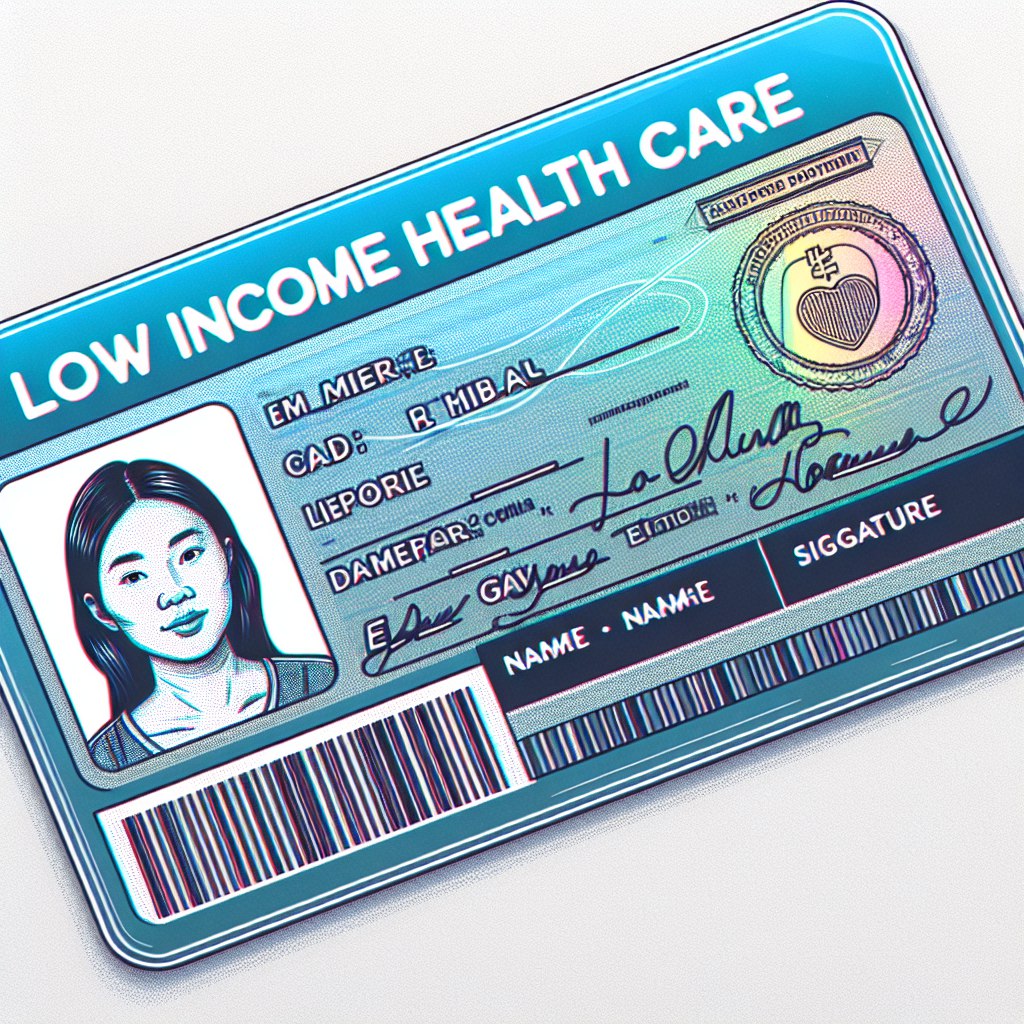
📘 Introduction
The Low Income Health Care Card (LIHCC) is an essential tool for individuals and families with limited financial resources. This card offers access to various health-related benefits and services, helping to reduce the financial burden of healthcare costs. In this comprehensive guide, we will delve into the details of the Low Income Health Care Card, including its benefits, eligibility criteria, application process, and more. Whether you are considering applying for the card or simply seeking more information, this guide will provide you with everything you need to know.
🏥 What is a Low Income Health Care Card?
The Low Income Health Care Card is a government-issued card designed to assist individuals and families with low incomes in managing their healthcare expenses. It provides access to a range of benefits, including discounted medical services, prescription medications, and various health-related goods and services.
1. Benefits of the Low Income Health Care Card
- Discounted Medications: Cardholders can receive significant discounts on prescription medications through the Pharmaceutical Benefits Scheme (PBS).
- Medical Services: Access to bulk-billed doctor visits, reduced-cost dental care, and other essential medical services.
- Utility Concessions: Discounts on electricity, gas, and other utility bills to help manage household expenses.
- Transport Concessions: Reduced fares on public transport, making travel more affordable.
🌟 Eligibility Criteria for the Low Income Health Care Card
To qualify for the Low Income Health Care Card, applicants must meet specific eligibility criteria. These criteria are designed to ensure that the card is provided to those who genuinely need financial assistance.
1. Income Limits
- Individual Income: Applicants must have a gross income below a certain threshold, which varies depending on their circumstances.
- Family Income: For families, the combined gross income of all members must fall below the specified limit.
2. Residency Requirements
- Permanent Residency: Applicants must be Australian citizens or permanent residents.
- Residency in Australia: They must be residing in Australia at the time of application and intend to remain in the country.
3. Other Requirements
- Age: There are no age restrictions for the Low Income Health Care Card, making it accessible to all eligible individuals and families.
- Assets Test: In some cases, an assets test may be conducted to determine eligibility, although this is not always required.
🌐 How to Apply for a Low Income Health Care Card
Applying for a Low Income Health Care Card is a straightforward process, but it requires careful attention to detail to ensure all necessary information is provided.
1. Gathering Required Documents
- Proof of Identity: Documents such as a driver’s license, passport, or birth certificate.
- Income Details: Payslips, tax returns, or other evidence of income for all household members.
- Residency Proof: Documents that confirm residency status, such as a utility bill or lease agreement.
2. Submitting the Application
- Online Application: The fastest and most convenient way to apply is through the government’s online portal. Applicants can create an account, fill out the application form, and submit the required documents electronically.
- Paper Application: Alternatively, applicants can download a paper application form, complete it, and mail it to the relevant government office along with the supporting documents.
- In-Person Application: For those who prefer face-to-face assistance, applications can be submitted in person at a local government service center.
3. Processing Time and Approval
- Processing Time: The processing time for a Low Income Health Care Card application can vary, but it typically takes a few weeks. Applicants can check the status of their application online or by contacting the relevant office.
- Approval and Issuance: Once approved, the card will be mailed to the applicant’s address. It is important to keep the card safe and report any loss or theft immediately.
📈 Maximizing the Benefits of a Low Income Health Care Card
Having a Low Income Health Care Card can significantly reduce healthcare costs, but it is important to understand how to maximize its benefits effectively.
1. Understanding the Pharmaceutical Benefits Scheme (PBS)
- PBS Medications: The PBS provides access to a wide range of prescription medications at reduced prices. Cardholders should familiarize themselves with the PBS schedule to understand which medications are covered.
- Co-Payment and Safety Net: Cardholders pay a lower co-payment for PBS medications. Once they reach the PBS Safety Net threshold, they receive further discounts or free medications for the rest of the calendar year.
2. Accessing Medical Services
- Bulk-Billed Services: Many doctors and medical providers offer bulk-billed services to cardholders, meaning there is no out-of-pocket expense for consultations.
- Specialist Referrals: Cardholders may also receive bulk-billed referrals to specialists, reducing the cost of specialist care.
3. Utility and Transport Concessions
- Applying for Concessions: Cardholders should contact their utility providers and local transport authorities to apply for available concessions. This can lead to significant savings on essential services.
- Monitoring Usage: Keeping track of utility usage and transport expenses can help in managing costs and maximizing savings.

🌍 Challenges and Considerations
While the Low Income Health Care Card offers substantial benefits, there are some challenges and considerations to keep in mind.
1. Changes in Circumstances
- Income Changes: If a cardholder’s income increases beyond the eligibility threshold, they must report this to the relevant authorities. This may result in the loss of eligibility for the card.
- Residency Changes: Moving overseas or changing residency status can affect eligibility. Cardholders should notify authorities of any significant changes in their circumstances.
2. Navigating the System
- Complex Processes: The application process and understanding the full range of benefits can be complex. Seeking assistance from social workers or community organizations can be helpful.
- Staying Informed: Keeping up to date with changes in government policies and benefits is crucial to ensure continuous eligibility and maximization of benefits.
📘 Conclusion
The Low Income Health Care Card is a valuable resource for individuals and families with limited financial means. It offers a range of benefits, including discounted medications, medical services, and utility concessions, which can significantly alleviate the financial burden of healthcare. By understanding the eligibility criteria, application process, and ways to maximize its benefits, cardholders can make the most of this important resource. Staying informed about changes in policies and maintaining accurate records of income and residency status are key to ensuring continued eligibility and support.
Whether you are already a cardholder or considering applying, the Low Income Health Care Card can be a crucial tool in managing healthcare costs and improving overall well-being.



















